6 Tips for Food Allergy Safe Playdates
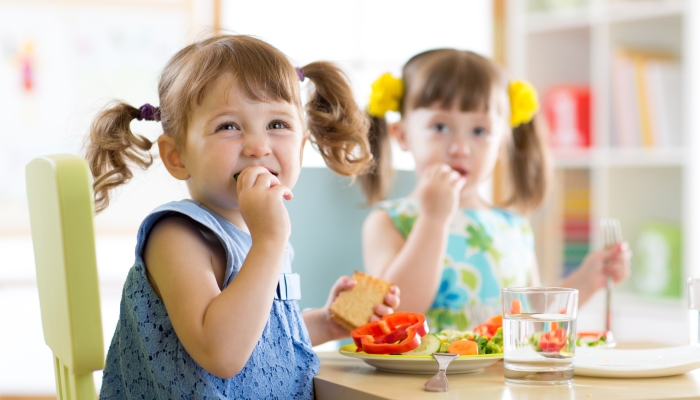
This post may contain affiliate links; please see our terms of use for details.
- Learn about your child’s allergens and methods of exposure.
- Talk openly about your child’s needs when arranging gatherings with friends.
- Know the symptoms of an allergic reaction and food allergy emergency.
- Collaborate with the hosting parent to safely manage the presence of common allergens in their home.
- Teach kids to focus on shared abilities and interests, not differences.
As parents, we have the blessing of growing with our children. The ability to nurture and provide our children with a healthy environment in which to develop serves as the basis for a strong family structure.
Sometimes we as parents need to learn additional skills in order to help our children thrive. The development of advanced parenting abilities to maintain our child’s safety and health takes time to learn.
Raising a food-allergic child is a good example of this fact. Beyond learning about your child’s specific food allergens and how to manage exposure or an allergic reaction, your family will also need to learn ways to navigate traditional childhood experiences like birthday parties and play dates.
As each family is unique, so are their approaches to managing their child’s allergies and the need for social interaction. But how do you determine what that looks like for your family? Can kids with food allergies attend playdates safely?
The answer is yes—play dates with food allergies can be safe and fun too! Read on for our top tips to help make your next playdate the best yet.
1. Understand the Specific Food Allergy

Food allergies involve so much more than a simple case of the sniffles.
People with food allergies experience the symptoms of an allergic reaction when they encounter their allergen(s) through touch (contact11. Tan, B. M., Sher, M. R., Good, R. A., & Bahna, S. L.. Severe food allergies by skin contact. Annals of Allergy, Asthma & Immunology. 2001;86(5), 583–586. https://doi.org/10.1016/s1081-1206(10)62908-0), eating (ingestion22. Abrams, E. M., & Sicherer, S. H.. Diagnosis and management of food allergy. Canadian Medical Association Journal. 2016;188(15), 1087–1093. https://doi.org/10.1503/cmaj.160124), or breathing (inhalation33. Ramirez, D. A., & Bahna, S. L.. Food hypersensitivity by inhalation. Clinical and Molecular Allergy. 2009;7(1). https://doi.org/10.1186/1476-7961-7-4). Symptoms can range from a mild response to a life-threatening emergency.
It’s difficult to educate others about your child’s food allergy and dietary requirements when you, the parent, are confused about what those modifications involve.
Contact your child’s allergist or healthcare provider to talk about the specifics of your child’s condition and gain further information.
2. Communicate with Other Parents
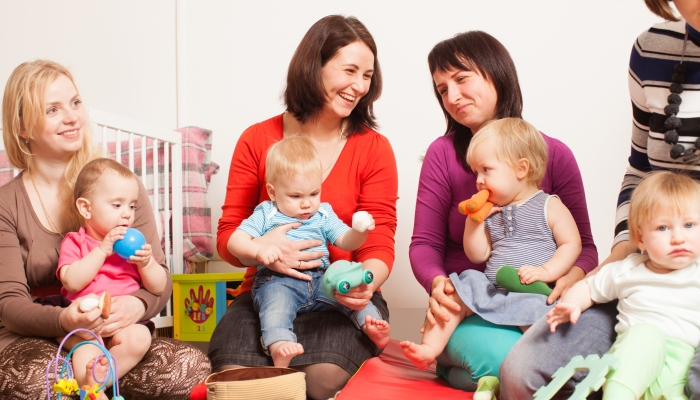
Open dialogue without exaggeration is vital as you and the other child’s parents talk about gathering your children for a playdate.
As you and the second family begin to make arrangements, consider discussing the following topics:
Share Basic Information
Not every family is familiar with food allergies or how to host food-allergic guests. There’s also a surprising amount of misinformation among the general public about safe foods and the transmission of potential allergens.
Give a general overview of the situation, such as, “My child has a very severe allergy to peanuts and tree nuts and carries an epinephrine auto-injector at all times in case of exposure. My child’s allergies occur when they touch, eat, or breathe foods with their allergens.”
Again, open and clear dialogue about your child’s needs is a must when working with other families.
Role Model Good Communication Skills
Honesty, creativity, and cooperation are all valuable dialogue skills when discussing the possibility of gathering for a play date. Try to stay flexible and open-minded when working with the other parent.
In my experience, it’s rare for other parents to be rude or uncompromising as I discuss what’s required to manage my child’s food allergies. Most folks are afraid of accidental exposure and are very willing to learn what they can do to help keep my child safe while at their house.
Collaborate
If the other child’s family is willing to host your child with food allergies, a great step is to offer to bring allergy-friendly snacks or foods that both children can safely enjoy.
Not everyone has the time, knowledge, or ability to decode food labels accurately; providing safe snacks can help ease the worry of hosting and feeding a child with food allergies.
Alternatively, parents can send you a screenshot of food labels of the products they’d like to serve your child. Current technology is a great help in answering questions at snack time.
Review Signs of Allergic Reactions
An important part of making an emergency plan is to realize when one is occurring.
According to the Asthma and Allergy Foundation of America, symptoms of an allergic reaction44. Allergy Symptoms. Asthma & Allergy Foundation of America. 2015. https://aafa.org/allergies/allergy-symptoms include:
- Itchy, watery eyes
- Itchy nose
- Sneezing
- Runny nose
- Rashes
- Redness
- Nausea or vomiting
- Diarrhea
- Pain
The other parent should also be informed of the signs of a severe allergic reaction (anaphylaxis55. Anaphylaxis: Causes, symptoms & treatment. ACAAI Public Website. 2018. https://acaai.org/allergies/symptoms/anaphylaxis) including:
- Difficulty breathing or wheezing
- Hives or swelling
- Tightness or swelling of the throat
- Hoarse voice
- Dizziness
- Fainting
- Low blood pressure
- Rapid heart beat
- Feeling of doom
- Cardiac arrest
An important reminder66. Allergy and Anaphylaxis Emergency Plan. American Academy of Pediatrics. 2019. https://downloads.aap.org/HC/AAP_Allergy_and_Anaphylaxis_Emergency_Plan.pdf from the experts at the American Academy of Pediatrics: Early recognition and prompt treatment are vital to the successful management of a food allergy emergency.
Encourage parents to give emergency medications, including an epinephrine auto-injector, as soon as they know an exposure has occurred and to contact you promptly for further direction.
3. Create an Allergen-Free Environment

When you share your home with the top nine allergens77. Common Allergens. FoodAllergy.org. https://www.foodallergy.org/living-food-allergies/food-allergy-essentials/common-allergens, the focus shifts from allergy elimination to allergen management.
In other words, it may be impossible to completely eliminate traces of problematic substances for those with food allergies.
However, there are many strategies you can use to reduce exposure and chances of your guest having an allergic reaction, such as:
Environmental Cleaning
If your family eats food in rooms other than the kitchen or dining room (for example, the living room where toys are stored), it’s wise to do a thorough wipe-down and clean before your child’s guest arrives, including dusting and vacuuming.
A 2018 study by Dr. William Sheehan et al titled “Environmental food exposure: what is the risk of clinical reactivity from cross-contact and what is the risk of sensitization”88. Sheehan, W. J., Taylor, S. L., Phipatanakul, W., & Brough, H. A.. Environmental Food Exposure: What Is the Risk of Clinical Reactivity From Cross-Contact and What Is the Risk of Sensitization. The Journal of Allergy and Clinical Immunology: In Practice. 2018;6(6), 1825–1832. https://doi.org/10.1016/j.jaip.2018.08.001, published in The Journal of Allergy and Clinical Immunology In Practice, reminds us that vacuuming allergen crumbs can aerosolize them or disperse their particles in the air before resettling them into dust. This makes the environment potentially hazardous for guests who have allergic reactions based on inhalation.
Off-limit allergenic foods, such as peanuts or trail mix for those with peanut allergies, should be stored away from where kids and their friends will be playing to prevent accidental exposure.
Control Your Kitchen
The experts at Kids with Food Allergies99. Avoiding Cross-Contact In Your Kitchen. Kids With Food Allergies. 2014. https://kidswithfoodallergies.org/living-with-food-allergies/choosing-safe-foods/prevent-allergic-reactions-in-your-kitchen offer several tips to avoid cross-contamination when preparing food for children with special dietary restrictions and allergies.
Of note, an allergic child should have dedicated, separate utensils from those used to prepare food. Wash items such as cookware, pots, and pans in hot sudsy water prior to using them to prepare food for those with allergies.
Manage Shared Surfaces
A 2014 study by Perry and colleagues titled “Distribution of Peanut Allergen in the Environment”1010. Perry, T. T., Conover-Walker, M. K., Pomés, A., Chapman, M. D., & Wood, R. A.. Distribution of peanut allergen in the environment. Journal of Allergy and Clinical Immunology. 2004;113(5), 973–976. https://doi.org/10.1016/j.jaci.2004.02.035 and published in the Journal of Allergy and Clinical Immunology reports that alcohol-based hand wipes or bleach are effective ways to remove allergen (in this case, peanut) protein from surfaces.
Whenever possible, toys should be cleaned in one of these ways before a guest with food allergies enters the home. Items that can’t be cleaned easily (such as stuffed animals or electronics) should be put away in another part of the house.
If snacks or other foods must be served during the playdate, consider using a disposable adhesive placemat to reduce allergen transmission from tray tables or other eating surfaces.
- CLEAN SURFACE – Great for kitchens, restaurants, airplanes, travel, and severe food allergies.
- EASY CLEAN UP – Allow children independence to self-feed, while insuring quick cleanup for parents.
- PROTECT DINING TABLE – Let your kids enjoy their crafting with play dough, paints and markers!
- BPA, PVC, TOXIN FREE PLASTIC – Placemats should have safe ingredients! Enjoy your meal without fretting!
Wash Hands
Make a house rule that hands are washed immediately upon entering the home to remove traces of potential allergens. Hands should also be cleaned again before preparing to eat.
Change Locations or Times
If hosting or eating with a child with food allergies in your own home feels too overwhelming at this point, consider keeping the playdate while shifting the location or time.
Many communities offer parks or play areas that are accessible to all kids, and eliminate the need for either family to host other friends.
Alternately, consider meeting mid-morning after a snack has already been served, or an hour prior to lunch to provide a natural end to the gathering.
4. Collaborate on Menu Planning
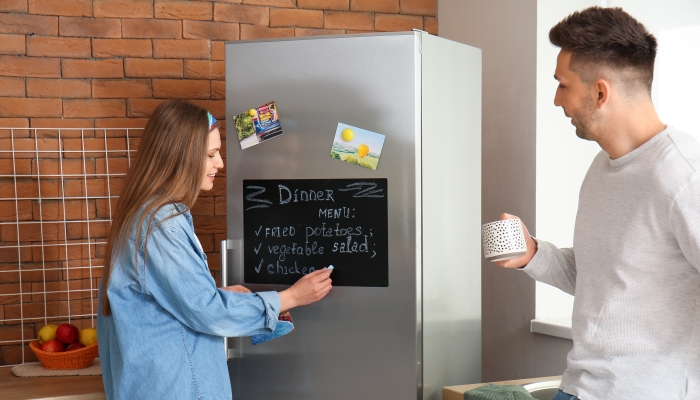
If food must be served while your child is with their friend, discuss potential food choices with the hosting parent well before the event begins. Several major brands carry tasty, kid-friendly products that can safely accommodate a variety of food allergies.
Unsure of how to adapt your best recipes to make safe snacks for allergic children? There are a lot of ideas for kid-approved snacks and allergy-friendly ingredient substitutions for your favorite recipes that you could try!
5. Prepare for Emergencies
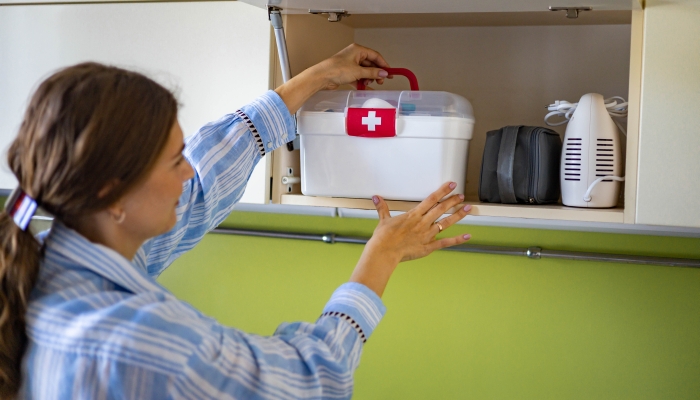
If you aren’t hosting the playdate, make sure the other parents know how to reach you in case of emergency, including alternate numbers.
As soon as practically possible, involve your child in gathering their emergency medication (including epinephrine auto-injector, antihistamines, and other medications or supplies) as they prepare to travel to a friend’s house.
Other important preparations include teaching your children the signs of a food allergy emergency, as well as how to summon help for themselves and self-administer emergency medication in the event of exposure.
Over time, such preparations encourage your child to take ownership of their food allergy1111. Rigione, G.. Teaching Good Food Allergy Habits: Why, When & How. Allergy Force. 2023. https://www.allergyforce.com/post/forming-good-food-allergy-habits-why-when-how and get used to making emergency preparations every time they leave home.
6. Foster an Inclusive Environment
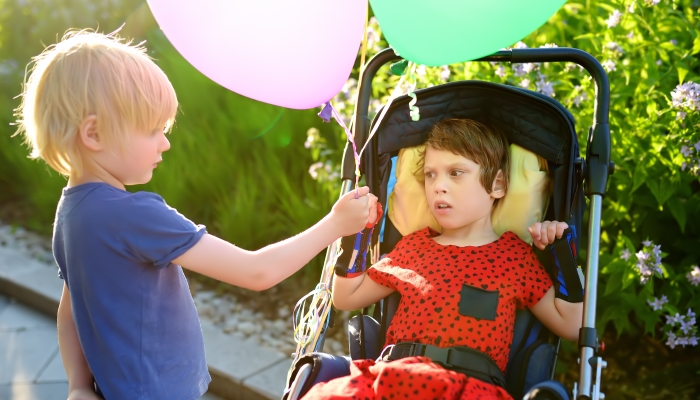
It’s important to remember that a child’s allergy is one very small part of who they are. Spend time talking with your child about all their wonderful traits and abilities and encourage relationships with friends who are supportive of them.
It can also be helpful to role-play conversations with your child about managing questions from other kids about the need for an alternate snack or food allergies.
Kids are naturally curious and will often ask about what they don’t understand. Focusing on shared likes and interests, not differences, can help encourage an inclusive environment for everyone.
Remember: The most important thing during a play date is for all children to have fun with their friends and safely enjoy their time together. By communicating clearly through honest dialogue with the families of your child’s friends, the stage is set for your child to safely enjoy gatherings away from home throughout their childhood years.
References
- Tan, B. M., Sher, M. R., Good, R. A., & Bahna, S. L. (2001). Severe food allergies by skin contact. Annals of Allergy, Asthma & Immunology, 86(5), 583–586. https://doi.org/10.1016/s1081-1206(10)62908-0
- Abrams, E. M., & Sicherer, S. H. (2016). Diagnosis and management of food allergy. Canadian Medical Association Journal, 188(15), 1087–1093. https://doi.org/10.1503/cmaj.160124
- Ramirez, D. A., & Bahna, S. L. (2009). Food hypersensitivity by inhalation. Clinical and Molecular Allergy, 7(1). https://doi.org/10.1186/1476-7961-7-4
- Allergy Symptoms. Asthma & Allergy Foundation of America. (2015, November). https://aafa.org/allergies/allergy-symptoms
- Anaphylaxis: Causes, symptoms & treatment. ACAAI Public Website. (2018, January 29). https://acaai.org/allergies/symptoms/anaphylaxis
- Allergy and Anaphylaxis Emergency Plan. American Academy of Pediatrics. (2019, March). https://downloads.aap.org/HC/AAP_Allergy_and_Anaphylaxis_Emergency_Plan.pdf
- Common Allergens. FoodAllergy.org. (n.d.). https://www.foodallergy.org/living-food-allergies/food-allergy-essentials/common-allergens
- Sheehan, W. J., Taylor, S. L., Phipatanakul, W., & Brough, H. A. (2018). Environmental Food Exposure: What Is the Risk of Clinical Reactivity From Cross-Contact and What Is the Risk of Sensitization. The Journal of Allergy and Clinical Immunology: In Practice, 6(6), 1825–1832. https://doi.org/10.1016/j.jaip.2018.08.001
- Avoiding Cross-Contact In Your Kitchen. Kids With Food Allergies. (2014, July). https://kidswithfoodallergies.org/living-with-food-allergies/choosing-safe-foods/prevent-allergic-reactions-in-your-kitchen
- Perry, T. T., Conover-Walker, M. K., Pomés, A., Chapman, M. D., & Wood, R. A. (2004). Distribution of peanut allergen in the environment. Journal of Allergy and Clinical Immunology, 113(5), 973–976. https://doi.org/10.1016/j.jaci.2004.02.035
- Rigione, G. (2023, March 3). Teaching Good Food Allergy Habits: Why, When & How. Allergy Force. https://www.allergyforce.com/post/forming-good-food-allergy-habits-why-when-how
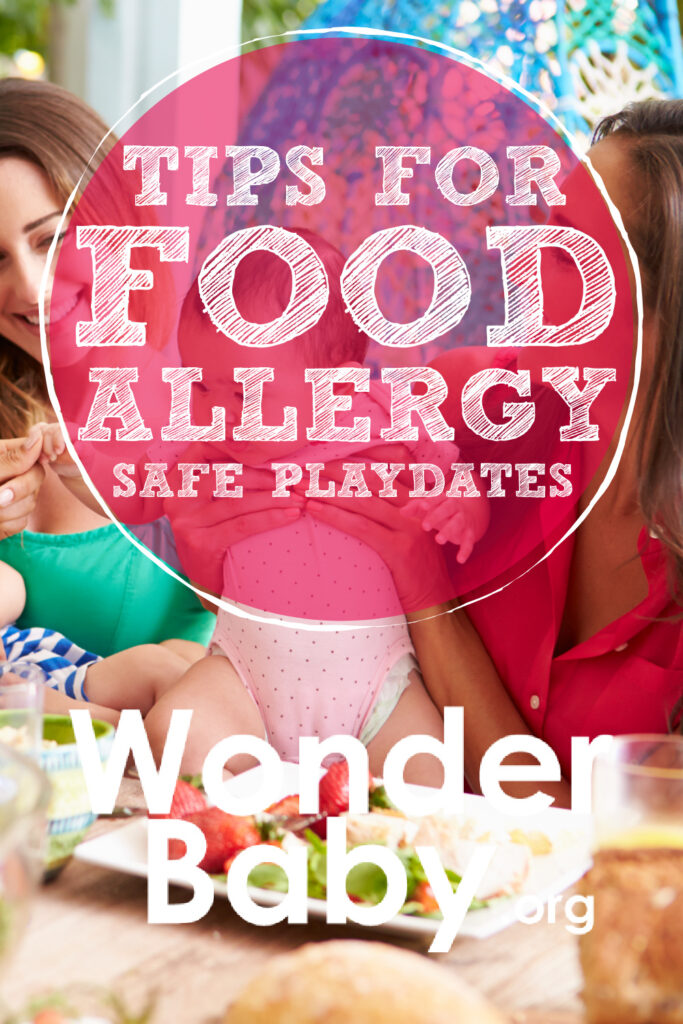
The information WonderBaby provides is not intended to be, and does not constitute, medical or other health advice or diagnosis and should not be used as such. Always consult with a qualified medical professional about your specific circumstances.
Related Posts
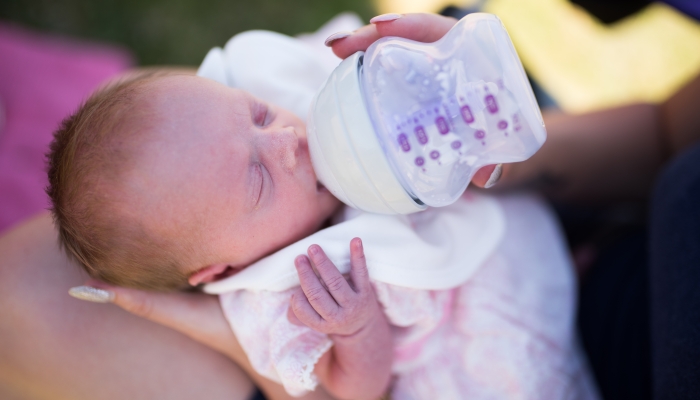
Feeding and Eating, Special Needs
Feeding Therapy Approaches for Infants with Special Needs
Many children with special needs have feeding difficulties. Working with a speech therapist, being patient, and experimenting with textures can help.

Feeding and Eating
Unexpected Foods That Cause Allergen Cross-Reactivity
A variety of unexpected foods and environmental substances can trigger an allergic reaction through cross-reactivity to food proteins.

Feeding and Eating
Easing Anxiety for Families Facing Food Allergies
Ongoing physical preparations and speaking openly about anxiety can ease the transition from diagnosis to living well with a food allergy.
